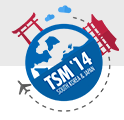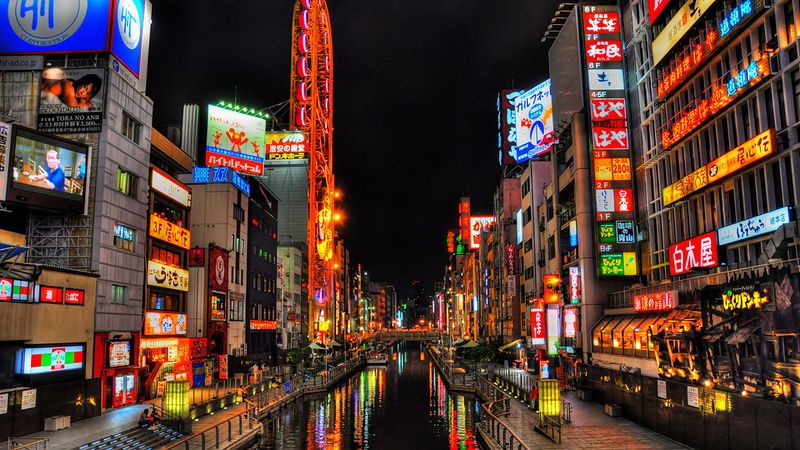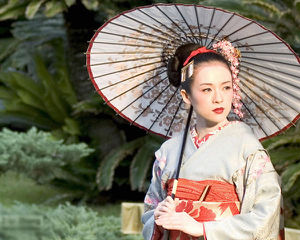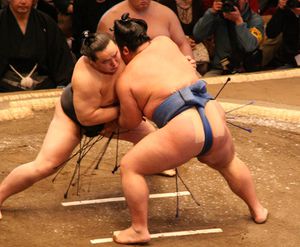Difference between revisions of "OISHI! Japan"
| Line 89: | Line 89: | ||
<b>Anime</b><br /><br /> | <b>Anime</b><br /><br /> | ||
| + | Anime began at the start of the 20th century, when Japanese filmmakers experimented with the animation techniques that were being explored in the West. The first generation of animators in the late 1910s included Ōten Shimokawa, Jun'ichi Kōuchi and Seitaro Kitayama, referred to as the "fathers" of anime. During World War II, propaganda films such as Momotarō no Umiwashi (1943) and Momotarō: Umi no Shinpei (1945) were made, the latter being the first anime feature film. During the 1970s, anime developed further, separating itself from its Western roots, and developing distinct genres such as mecha and its Super Robot sub-genre. Typical shows from this period include Lupin III and Mazinger Z. During this period several filmmakers became famous, especially Hayao Miyazaki and Mamoru Oshii.In the 1980s, anime was accepted in the mainstream in Japan, and experienced a boom in production. | ||
==<div style="background: #ffffff; padding: 13px; font-weight: bold; line-height: 0.3em; text-indent: 20px;font-size:26px; font-family:Britannic Bold"><font face="Avenir" size = 4 color= #000000>Japanese Business Etiquette</font></div>== | ==<div style="background: #ffffff; padding: 13px; font-weight: bold; line-height: 0.3em; text-indent: 20px;font-size:26px; font-family:Britannic Bold"><font face="Avenir" size = 4 color= #000000>Japanese Business Etiquette</font></div>== | ||
Revision as of 01:07, 27 March 2014
Contents
Overview of Japan
- Population size: 127,500,000 (facing an aging population)
- Capital: Tokyo
- Language: Japanese (99% speak Japanese as their primary language)
- Religion: Majority- Shinto and Buddhism, Minority- Christians, Muslims, Hindus, and Sikhs
- One of the most technologically advanced societies in the world
Interesting facts about Japan
- Late-night dancing is illegal in Japan
- Japan suffers 1,500 earthquakes every year
- Japan has more than 50,000 people who are over 100 years old
- Japan has 2 gun-related homicides per year
- The world's oldest company operated in Japan from 578 AD to 2006
- Japan consists of over 6,800 islands
- Japanese trains are among the world's most punctual: their average delay is just 18 seconds
- Square watermelons are grown by Japanese farmers for easier stack and store
- In Japan, there are more pets than children
- Japan's birth rate is so low that adult diapers are sold more than baby diapers
- 98% of all adoptions in Japan are of male adults, so that family businesses can remain within the family
- The Japanese who survived the titanic crash was called a coward in his country for not dying with the other passengers
- In Japan, 90% of mobile phones are waterproof because youngsters use them even in the shower
- In Korea and Japan, there is a cat cafe where you can go to drink coffee and hang out with cats for hours
- Japan has 5.52 million vending machines
- Sleeping on the job is acceptable in Japan, as it's viewed as exhaustion from working hard
- In Japan, 685 kids were rushed to hospitals in 1997 after an intense poke episode that caused dizziness, vomiting and seizures
- In Japan, teachers and students come together to clean the classrooms and cafeteria
Source: http://www.factslides.com/s-Japan
Uniquely Japan
Geisha
Geisha are traditional Japanese entertainers who attend to guests during meals, banquets and other occasions. They are trained in various traditional Japanese arts, such as dance and music, as well as in the art of communication. Their role is to make guests feel at ease with conversation, drinking games and dance performances.Geisha can be found in several cities across Japan, including Tokyo and Kanazawa, but the former capital of Kyoto remains the best and most prestigious place to experience geisha, who are known there in the local dialect as geiko.
The Incredible Truth About Japan's Geishas: https://www.youtube.com/watch?gl=SG&hl=en-GB&v=mIdgqWPdsA0
Sumo Wrestler
In Sumo Wrestling, two parties only wear a wawashi (loincloth), face each other in a dohyo (circular ring), push, grapple, and try to throw each other. The one who forces his opponent to the ground or pushes him out of the ring is the winner.
Interesting fact about Sumo Wrestler:
- Every sumo wrestler belongs to a stable, which is where they live while they are young. A stable is managed by a stable master, a retired wrestler who was a good wrestler in his prime.
- Mornings in a sumo stable begin at around 5:00 am
- Sumo's diet: Chanko- includes stews, Chinese food, sashimi, and deep-fried food
- Eat two meals a day, a breakfast at around 11:00 am and dinner at about 6:00 pm
- Higher-ranked wrestlers will have their meals and bath first
- Sumo takes nap to become bigger
Anime
Anime began at the start of the 20th century, when Japanese filmmakers experimented with the animation techniques that were being explored in the West. The first generation of animators in the late 1910s included Ōten Shimokawa, Jun'ichi Kōuchi and Seitaro Kitayama, referred to as the "fathers" of anime. During World War II, propaganda films such as Momotarō no Umiwashi (1943) and Momotarō: Umi no Shinpei (1945) were made, the latter being the first anime feature film. During the 1970s, anime developed further, separating itself from its Western roots, and developing distinct genres such as mecha and its Super Robot sub-genre. Typical shows from this period include Lupin III and Mazinger Z. During this period several filmmakers became famous, especially Hayao Miyazaki and Mamoru Oshii.In the 1980s, anime was accepted in the mainstream in Japan, and experienced a boom in production.




